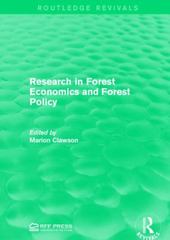This is the screenshot of questions. Both.
2. Subsidies are (in many senses) the opposite of taxes. This question will analyze how that works. Consider the market for solar panels (that people would install on their houses). Let's suppose that this is a well functioning, perfectly competitive market. Suppose that the demand curve for solar panels can be given by @ = 10000 - 700P and the supply curve is @ = 2500P. In both equations Q is in mega-watts of electricity supplied by solar panels and P is the price per mega-watt. (a) What is the equilibrium price and quantity in this market? What is consumer surplus? What is producer surplus? (b) Suppose that the government, wishing to encourage more production of electricity with solar panels, puts in place a subsidy for buyers. For each mega-watt of solar electricity bought, the government will pay the buyer $0.25. What does this subsidy do to the effective demand curve of buyers? What does it do to the supply curve of producers? (Hint: supply is marginal cost! Did anything change about marginal cost?) What is the equilibrium price & quantity in this market now? (c) With the subsidy in place, what is consumer surplus? What is producer surplus? How much does this subsidy cost the government? Therefore, what is total surplus (including the cost to the government )? Is total surplus here higher or lower than it was with no subsidy? 3. A tiresome tarriff! On Sep 11, 2009, the New York Times reported that "In a break with the trade policies of his predecessor, President Obama announced on Friday night that he would impose a...tariff on automobile and light- truck tires imported from China. The decision is a major victory for the United Steelworkers, the union that represents American tire workers. And Mr. Obama cannot afford to jeopardize his relationship with major unions as he pushes Congress to overhaul the nation's health care system." Let us make some simplifying assumptions to analyze these tariffs. Suppose that demand for radial car tires in the US is given by the equation: P = 150 -0.20, and non-Chinese supply to the US is given by P = 0.080, where P is in dollars per tire, and Q is in millions of tires per year. (You can treat "non-Chinese supply" the same as "US supply" for any calculations of producer surplus or deadweight loss. You can also assume that purchasers of radial car tires do not care about where the tire is manufactured and will always simply buy whatever tire is the lowest price.) Assume that before the tariff, the US faced a supply curve from China given by P = 30. Also assume that the tariff imposed is simply $10 per tire. (a) Before the tariff, and with no other restrictions on trade, what would be the price of radial car tires in the US? What quantity would US consumers buy? What quantity would non-Chinese producers supply to the US market? What quantity would be imported from China? (b) Now consider the situation with the $10 tariff in place. With the $10 tariff in place, what will be the price of radial car tires in the US? What quantity would US consumers buy? What quantity would non-Chinese producers supply to the US market? What quantity would be imported from China? What would be US government revenue from the tariff? (c) Suppose that the tariff helped create one thousand additional jobs in the radial car tire industry in the US. How much cost (in deadweight loss) was incurred per job







